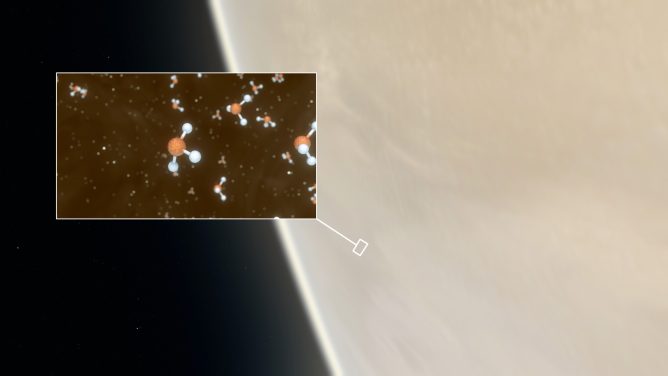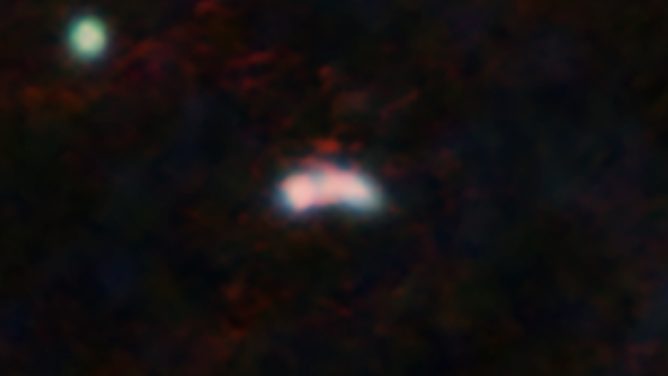A newly and better processed version of data on planet Venus, collected with the Atacama Large Millimeter/submillimeter Array (ALMA) in Chile, has now been made publicly available via the ALMA science archive.
The observations of our sister planet with ALMA were done in 2019 at the request of a team of astronomers led by Jane Greaves of Cardiff University in the UK. The team used the ALMA data to confirm whether the rare molecule phosphine was present in the clouds of Venus, after spotting signs of this element in observations from the James Clerk Maxwell Telescope (JCMT), operated by the East Asian Observatory in Hawaiʻi.
The finding drew international attention due to phosphine’s significance as a possible biomarker. It also generated healthy scientific discussion, with teams around the world scrutinizing the study and its associated data.
As a result of the scrutiny, ALMA staff identified an issue in the ALMA data: a spurious ‘ripple’ in the observations of Venus that could have an impact on the phosphine detection. Detecting faint signals from very bright Solar-System objects such as Venus can be especially challenging, since the requirements on how ALMA should be set up for this type of observation are very strict. In addition, ALMA staff found there were minor software issues that, when combined with the specific set-up of the Venus observations, caused the ‘ripple’ to appear in the data.
Following standard procedure, once the potential problem had been identified, the staff at the ESO-based European ALMA Regional Centre removed the data from the ALMA science archive to fix the issue. A recalibrated, more-accurate version of the data has now been uploaded to the ALMA archive where it is available to the astronomy community.
Greaves and her team have used the newly calibrated data in a new study (not yet peer-reviewed) of the Venus atmosphere. Other groups interested in studying Venus can now make use of the better processed version of the data to assess the robustness of the phosphine detection, helping us learn more about our sister planet in the process.
ALMA is a partnership of ESO (representing its member states), NSF (USA) and NINS (Japan), together with NRC (Canada), MOST and ASIAA (Taiwan), and KASI (Republic of Korea), in cooperation with the Republic of Chile. The Joint ALMA Observatory is operated by ESO, AUI/NRAO and NAOJ.









